Metering / Exposure / Focus
Both cameras offer spot, averaging and pattern metering. Spot takes a measurement from a small area at the center of the frame. Averaging takes a single measurement that averages the entire frame – with extra emphasis on the center. Pattern takes separate measurements in several areas of the frame, and then evaluates them, using digital algorithms. Pattern systems are supposed to be able to detect back-lighting and other difficult situations.
We shot a few objects on white paper to see how the cameras' meters performed, and checked the exposures against a hand-held light meter. The Konica-Minolta Autometer VF in ambient mode, called for exposures of f/8 at 1/15 second. Both the FZ30 and the S9000 meters agreed in Program mode. We found these frames slightly dark – 1/3 stop more exposure brightened up the background and opened the shadows to show more detail, without blowing out the white background.
We expected the Center-weighted exposure to be worse – it should have been fooled by the white background, and darkened the image. The Fujifilm FinePix S9000 behaved just that way – at f/3.8 at 1/80, its Center-weighted shot was a full stop darker than the Pattern shot, and it looked pretty dull. The FZ30's Center-weighted exposure was exactly the same as its Pattern shot – apparently, the FZ30's Center-weighted mode is so heavily center-weighted that it ignored the light-colored perimeter of the image. When we zoomed the FZ30 out, it behaved the same way the S9000 did, darkening the image unacceptably in Center-weighted mode.
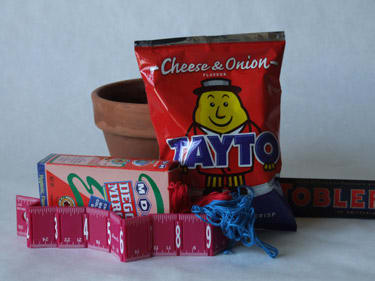
Fujifilm S9000 - Center-weighted
*
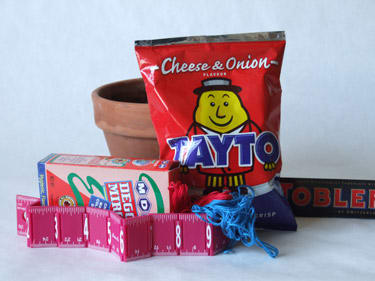
Fujifilm S9000 - Pattern Metering
*
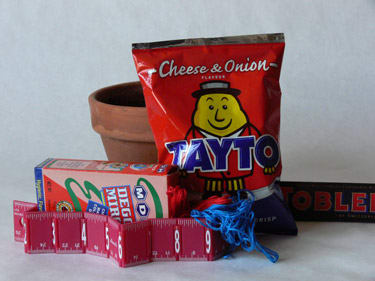
Panasonic FZ30 - Center-weighted*
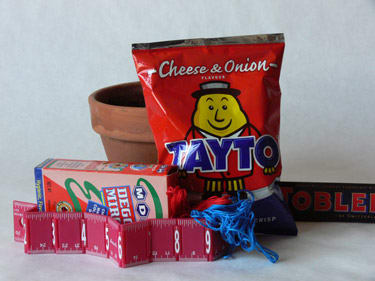
Panasonic FZ30 - Pattern Metering
In Spot mode, the S9000 picked up a highlight at the center of the frame, and decreased exposure, while the FZ30's spot mode opened up from f/ 8 at 1/15 to f/ 6.3 at 1/15. It seems that the FZ30's spot is larger than the S9000's.
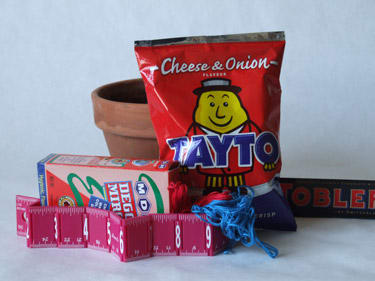
Fujifilm S9000 - Spot Metering
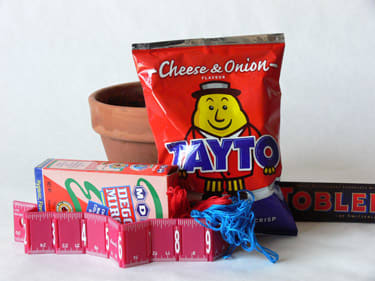
Panasonic FZ30 - Spot Metering*
We shot our bag of potato crisps against a bright window, backlighting them severely. Each camera handled the extreme lighting as expected – Center-weighted provided dark exposures that were about right for the scene outside the window, Pattern increased exposure by about 1 stop, increasing the detail in the bag of chips, but not enough to make it look natural. The background out the window retains detail, but is too bright in both the FZ30's and the S9000's shots. Both spot metering shots get the exposure for the chips bag just right, which completely overexposes the window.
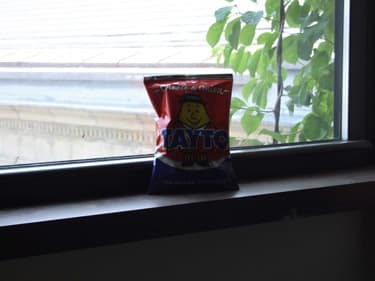
*Fujifilm S9000 - Multi Metering
*
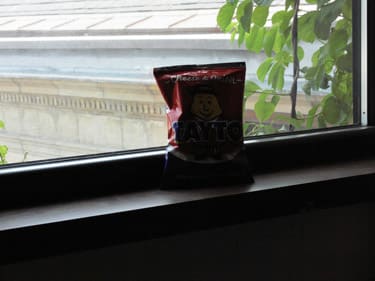
*Panasonic FZ30 - Multi Metering
*
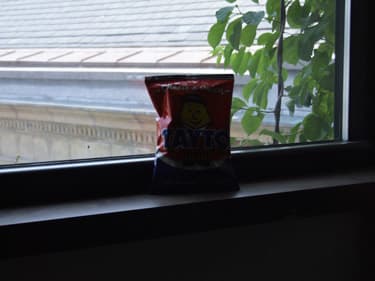
*Fujifilm S9000 - Average Metering
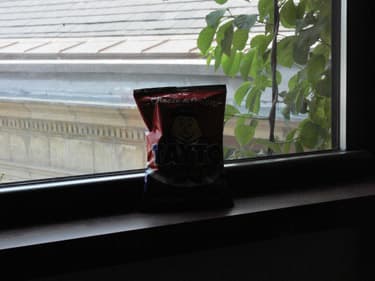
Panasonic FZ30 - Average Metering *
The window scene is so contrasty that it overwhelms the differences between the metering systems, while the scene with the white background is subtle enough to indicate differences between the two. It appears that the S9000 has a very tight spot meter pattern, while the FZ30's is larger. The S9000's Center-weighted system took the background into account more than the FZ30's – it's less weighted toward the center of the frame.
The difference in metering patterns between the FZ30 and the S9000 are significant. The S9000's patterns are more extreme – the spot is tighter, and the averaging setting is more broad. By zooming out or re-composing our images, we easily created scenes that each camera metered well and others that they metered poorly.
Exposure*(Advantage: Fujifilm S9000)
*We found that both the FZ30 and the S9000 under-expose when the background is relatively light. Given how common white walls are as backgrounds, careful users of either camera may want to use the cameras' exposure bias controls to add 1/3 of a stop to many exposures when shooting in automated modes, or to control exposure manually most of the time. However, the S9000’s more precise metering will provide more opportunity to control exposure through the various metering patterns without having to rely on an incident reading.
**Focus
***Manual Focus (Advantage: Panasonic FZ30)
*Both the Panasonic FZ30 and the Fujifilm FinePix S9000 rely on electronic displays for framing and manual focus. The cameras have both LCD displays and electronic viewfinders – which are tiny LCDs with an optical magnification system. It’s really not possible to focus either camera precisely based on the full-frame view on either their LCDs or their viewfinders, so both cameras offer a magnified view of the center of the frame. The S9000 shows a magnified area in the center of the frame, while the edges of the screen show the unmagnified image, which allows the user to keep track of the image composition. The FZ30's magnified view takes up the whole screen, showing a larger magnified area but losing the composition reference that the Fujifilm system offers. In magnified mode, the FZ30 allows the users to navigate across the image with the 4-way controller.
Depth of field can both hurt and help the FZ30 and S9000 user – it makes it harder to get the cameras in perfect focus, but easier to cover up errors. Here's how:
Measured in millimeters, the two cameras' lenses run from extremely short to moderate focal length. The S9000's optic runs from 6.2 to 66.7 mm, and the FZ30's runs from 7.4 to 88.8 mm. Given the small size of the cameras' sensors, those lenses offer impressive zoom range, but they also influence depth of field – when the camera is focused at a given point, the image is acceptably sharp over a wider range of distances than it would be on a camera that uses longer focal-length lenses. It's a little more complicated than that, but in practice, that's what users experience at the viewfinder and in prints.
The problem is that it is hard to see the difference, in the LCDs or viewfinders, between a perfectly focused image and one that’s slightly out of focus. On both the FZ30 and the S9000, in manual focus the image drifts toward sharpness, while it snaps into focus more definitively on larger-format cameras. The problem is that "slightly out of focus" is harder to see on an LCD than it is in a large print – the sort of prints that the 8-megapixel FZ30 and the 9-megapixel S9000 should, and often do, justify.
In the end, neither the FZ30 not the S9000 provides an adequate supplement for manual focusing with an optical viewfinder; however, the FZ30’s moveable full-frame magnification offers a larger, more visible frame that makes it easier to observe subtleties in focus.
*Autofocus (Advantage: Fujifilm S9000)
*We found that both the Panasonic Lumix FZ30 and the Fujifilm FinePix S9000 achieve accurate focus even in relatively subdued room light. One problem we found is speed: our timing tests indicate that the S9000 and the FZ30 take between 0.35 and 0.9 seconds to focus. That's enough to significantly decrease the number of keepers we snagged while photographing a vigorous, precocious 1-year-old. The 0.38-second delay is long enough that we had to anticipate Bruce's expressions, not just his position, as he squirmed in his mom's lap. While neither system had adequate speed to parallel an SLR, the FZ30’s AF system had a much longer delay.
Both autofocus systems use through-the-lens contrast detection to establish focus, a system that relies on subject contrast to work. We found that the FZ30 functioned better with low-contrast subjects than the S9000.
Both the FZ30 and the S9000 have autofocus assist lights, and we found them effective at about 16 feet and under.
The FZ30's better autofocus performance in low contrast scenes is less significant than its longer delay. Though we don't have a ringing endorsement here, the S9000’s less egregiously-slow performance lets it edge out the FZ30.
Still Imaging Performance / Image Quality
**Speed / Timing
***Start-up to First Shot (Advantage: Fujifilm S9000)
*The S9000 started up and took a shot for us in 1.22 seconds, while the FZ30 takes 1.84. Both are much faster than many compact cameras and much slower than most DSLRs. In many situations, users should keep the cameras turned on rather than hoping to get them started up before a shot disappears. We'd prefer that the cameras start up in less than a second – DSLRs usually clock in at under 1/4. Neither of these models comes close to that standard, but the S9000's 0.62-second advantage is substantial.
*Shot to Shot (Advantage: Panasonic FZ30)
*The FZ30 comes close to a 3 frames-per-second burst for 5 images in Fine mode, while the S9000 shoots less than 2 frames per second for up to 4 images. Both cameras have continuous burst modes, but they're much slower. The FZ30 drops to less than 2 frames per second, and the S9000 drops to a glacial 1.1 fps. Most DSLRs shoot bursts of 10 or more frames at a full 3 frames per second or faster.
*Shutter to Shot (Advantage: Fujifilm S9000)
*Shutter lag, the delay between pressing the shutter and getting the shot, is the critical timing measurement for most photographers. The ideal camera would have no delay at all: it would capture exactly what the photographer sees at the moment he or she presses the shutter. Even the most responsive cameras delay a little bit, however, in the range of 0.04 seconds. Many DSLRs delay about 0.08 seconds.
Unfortunately, the S9000 delayed much longer, about 0.45 seconds. The FZ30 delayed 0.9-seconds in our test. As we noted in our Autofocus section, those kinds of delays make it pretty tough to snag a good shot of an active subject.
Overall, the S9000 wins the speed contest purely for its shutter-to-shot score. The difference in start-up time is much less significant, and burst rate is only important in a camera responsive enough to shoot action – with shutter delays like these, shooting action is pretty much a random game.
**Resolution
**We test sharpness by photographing a standard ISO resolution chart and evaluate the images with Imatest software. Imatest measures line-widths per picture height (LW/PH), a unit that remains constant, regardless of image sensor size. Because of the way sensors are arranged on imaging chips, it's common for cameras to achieve different horizontal and vertical resolution scores, so we check both. In our standard reviews of the FZ30 and the S9000, we report how each camera performed at its optimum settings. For this comparison, we have added a variety of tests to indicate the cameras' performance in diverse circumstances.
*Resolution: Maximum Aperture (Advantage: Panasonic FZ30)
*We tested both the FZ30 and the S9000 at the equivalent of 85mm, or a slight telephoto, with their apertures set wide open: f/2.8. The FZ30 resolved the equivalent of 1704 LW/PH horizontally and 1741 LW/PH vertically. The S9000 scored a very comparable 1746 LW/PH horizontally, but only 1481 LW/PH vertically. That's a larger gap than we usually see between vertical and horizontal. Throughout our testing, we saw larger gaps between horizontal and vertical with the S9000 than with the FZ30, indicating that the difference probably relates to the sensor designs.
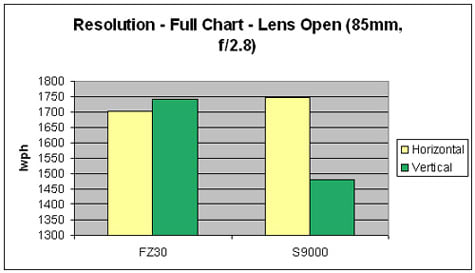
*Corner Sharpness (Advantage: Panasonic FZ30)
*We also tested edge and corner sharpness with the two cameras, shooting with the lenses set to 50mm equivalent. As with other resolution tests, the cameras yielded similar results.
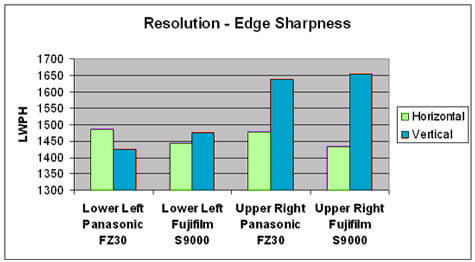
*Focal Range (Advantage: Panasonic FZ30)
*We tested the two cameras throughout their zoom ranges. Because the S9000 has a wider-angle lens and the FZ30 has a longer telephoto, the line plots don't overlap throughout the ranges, but they show an interesting contrast – the FZ30, with its long telephoto, improves at longer focal lengths, while the S9000, with its extended wide angle capability, performs better at short focal lengths. The two cameras do best in the distinctive parts of their range.
Horizontally the FZ30 has a mean resolution horizontally of 1610 when averaged from our test results. The S9000 has a slight edge in terms of horizontal resolution with its averaged reading of 1701. Interestingly the FZ30 does have a higher vertical lwph average of 1620 while the S9000 fluctuates to a markedly lower 1528. These results, if averaged together, will produce a marginal advantage for the FZ30 but this difference is negligible.
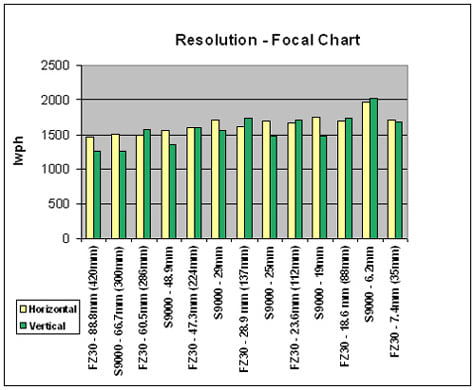
*Image Stabilization vs High ISO (Advantage: Panasonic FZ30) *
Departing from our typical use of a sturdy tripod to hold the cameras steady and yield the best possible results, we added a more real-world test. We shot the two cameras handheld in low light to compare their strategies for avoiding motion blur. Shooting the FZ30 at ISO 400 with Optical Image Stabilization on mode 1, we got sharp shots at 1/30 of a second, with reasonable noise results. The FZ30 recorded 1127 LW/PH (Vertical), with 15.4% undersharpening and 1066 LW/PH (Horizontal), with 20.1% undersharpening hand-held, with a noise score of 2.8575.
The Fujifilm S9000, at an ISO of 1600 which allowed a shutter speed of 1/420, recorded 1341 LW/PH (Horizontal), with 15.1% undersharpening and 1568 LW/PH (Vertical), with 11% undersharpening. Its high resolutions scores were at the expense of noise, however, scoring 3.3975 on the noise segment of the test.
The FZ30 is the superior performer in our resolution tests. First, its horizontal and vertical results are consistent, which is a minor but notable advantage. Second, the FZ30's OIS system produced an acceptable result at 1/30 of a second, at ISO 400, while the S9000, which lacks optical stabilization, produced a sharp but very noisy image in the same conditions, because we had to bump the ISO to 1600.
Panasonic FZ30 - IS
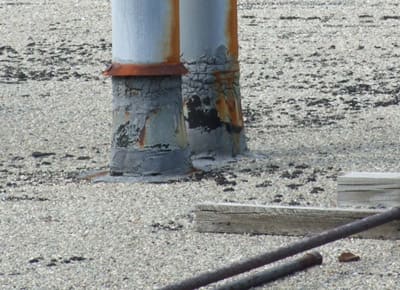
Fujifilm S9000 - ISO 400
*Color Fringing (Advantage: Panasonic FZ30)
*The lenses on the S9000 and the FZ30 don't show much color aberration in our test shots. Usually, our dynamic range images are a torture test for color fringing. The S9000 images show some mild color contamination, but not much. The lower left margins of the numbers are a bit pink, while the upper rights are tinged with green. Though the FZ30 shows some color noise in the whites, it doesn't show the consistent colored borders that constitute fringing. We shot these images in the middle of the camera's telephoto ranges, where they should perform best.
*Fujifilm S9000 *
Panasonic FZ30
Looking at the corners of wide-angle shots, where there should be more of a problem, we note more color fringing in the S9000 image, with a bold green halo around the white zipper. The FZ30 shows slight fringing as well. Though the FZ30 performs better, it's worth noting that the S9000's zoom was at its widest setting for this shot. It's much wider than the FZ30's lens, and zooms are more prone to fringing at their wide settings.
The FZ30 wins this test, but we hasten to note that the cameras perform more comparably at comparable focal lengths.
Moiré*(Advantage: Fujifilm S9000) *
The problem most photographers call moiré often translates into a subtle color error that affects areas of very fine, high-contrast detail. Both the S9000 and the FZ30 produce moiré patterns, as we discovered when we shot a standard "star pattern" test target from about 8 feet away with the cameras set to 35mm equivalent focal length. Our sample images started out at 160 pixels square and were blown up to 320 pixels to show the effect more clearly.
In our test, both cameras add color artifacts to the black and white target. The S9000 introduces much less than the FZ30, which builds up both warm and cool colors at the left, right, top and bottom of the target.
*Fujifilm S9000
*
**Panasonic FZ30 *
Moiré is a problem that manufacturers combat with anti-aliasing filters, which are optical elements on the sensors. The filters can cut apparent sharpness, and so it isn't surprising that the camera with sharper images, the FZ30, would have the worse moiré problem.
The S9000 wins this test, though the FZ30's problem may arise from its image sharpness.
Distortion* (Advantage: Fujifilm S9000)
*It's common for long zooms like the 12x on the FZ30 and the 10x on the S9000 to show barrel distortion at their wide-angle settings, and both lenses distort. Though the S9000 has a more extreme wide-angle setting – equivalent to a 28mm lens – it produces less apparent distortion than the FZ30 at its widest setting. In the cropped wide-angle images, the bright red line is straight, and was added in post-processing. The green and blue lines are part of the shot, and would appear straight if the cameras didn't distort them.
*Fujifilm S9000 - barrel distortion *
**Panasonic FZ30 - barrel distortion *
At their telephoto settings, the cameras perform better. At the 300mm equivalent, the S9000 doesn't show distortion at all – the black, straight lines of the grid look straight in our image. The FZ30's grid shows slight pincushion distortion at its maximum zoom, a 420mm equivalent. We added a bright green straight line to each image to compare with the black grid.
*Fujifilm S9000 - tele distortion *
**Panasonic FZ30 - tele distortion *
The S9000 takes this category, with less distortion over a more-challenging zoom range – its extended wide-angle capability could reasonably have caused more extreme distortion.
Noise / High ISO Performance *(Advantage: Fujifilm S9000)
*Noise in images is variations of color and brightness where they don't belong. All sorts of problems can contribute to noise – the image chip itself can create bad signals when a charge builds up in a sensor site because of heat or static, the image processor can add noise as it creates a JPEG, and so on. We use Imatest to examine our test images for noise. The S9000 performed better than the FZ30 in our analysis. The S9000 delivered lower noise at ISO 80, and maintained low scores as ISO increased to 400. The FZ30's scores were higher and got worse as ISO increased. The S9000's scores for ISO 800 and 1600 were much worse than its scores at lower settings, which is disappointing, because it didn't do as well as other compact cameras from Fujifilm and because it relies on its higher sensitivities as an image stabilization by proxy. The FZ30 displayed much more noise than the S9000 at ISO 400 and does not have 800 or 1600 ISO settings.
*Night Scene
*The following night scene shots were captured in aperture priority mode, with the apertures wide open. The cameras were placed on a tripod and set to average metering and auto white balance to remove as much human interference as possible.
Fujifilm S9000 - ISO 80*
Panasonic FZ30 - ISO 80*
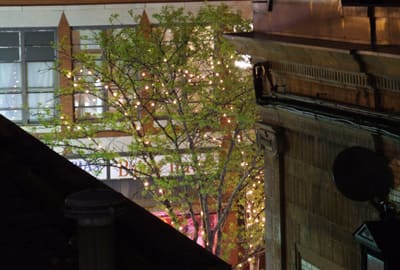
Fujifilm S9000 - ISO 100
Panasonic FZ30 - ISO 100*
Fujifilm S9000 - ISO 200*
Panasonic FZ30 - ISO 200*
Fujifilm S9000 - ISO 400*
Panasonic FZ30 - ISO 400
**
Fujifilm S9000 - ISO 800
Fujifilm S9000 - ISO 1600
Low Light / Long Exposures* (Advantage: Panasonic FZ30)
*Light is what makes photography work, and most technology works best with lots of it. In low light, cameras need long exposure times, high ISO settings, or both. High ISO settings come at the cost of elevated noise levels. Long exposure times cause problems for digital cameras as heat builds up in imaging chips, and also add additional noise to images. It's also common for colors to lose saturation and take on casts in low light.
To test how cameras react to these challenges, we run a set of shots of a darkened street scene, testing long exposure times and various ISO settings.
Comparing two shots at ISO 80, with exposures of about 30 seconds – the FZ30 shot at 30 seconds and f/10, and the S9000 shot it at 32 seconds and f/9.8 – the FZ30 delivered much more saturated colors and a better-exposed image than the S9000. Given the sodium vapor, neon and fluorescent light sources, it's not wise to say that one image is more accurate than the other, but the S9000's green leaves are more plant-like, and the FZ30's tree looks bluish and electric. The white sign in the background is more neutral in the S9000 shot, but the dimly-lit copper flashing on the roof at right is also more neutral and subdued.
*Fujifilm S9000 - 30 seconds *
Panasonic FZ30 - 30 seconds*
*Fujifilm S9000 - 20 seconds *
Panasonic FZ30 - 20 seconds *
**Fujifilm S9000 - 10 seconds *
**Panasonic FZ30 - 10 seconds *
Comparing the same scene shot at ISO 80 for 5 seconds shows the same performance difference between the two cameras: the FZ30 shows brighter color and more shadow detail.
*Fujifilm S9000 - 05 seconds *
*Panasonic FZ30 - 05 seconds *
The FZ30's saturated colors, longer shutter durations (offering 40, 50, and 60 second exposures), and good exposure give it the advantage in this test. Neutral colors may be more a sign of desaturation than color balance in light like this.
*Panasonic FZ30 - 40 seconds *
*Panasonic FZ30 - 50 seconds *
Panasonic FZ30 - 60 seconds *
Dynamic Range* (Advantage: Fujifilm S9000)
*A camera's dynamic range is the span of light and dark it can capture with detail. Subjects that are too bright for a given exposure are rendered pure white. Those that are too dark appear purely black.
Dynamic Range is not likely to be a strong suit for cameras with 1/1.8 and 1/1.6-inch sensors. The size of a camera's individual photo-sites is a key variable in dynamic range, and the S9000 and the FZ30 have small ones. Still, both Fujifilm and Panasonic tend to deliver better-than-average results on this test.
We use a standardized laboratory test for dynamic range, photographing a translucent Stouffer test target that is lit from behind. The target shows a series of rectangles that range from nearly clear to almost opaque. The lightest rectangle is more than 13 EV brighter than the darkest. We use Imatest software to analyze each camera's images of the target at each ISO setting.
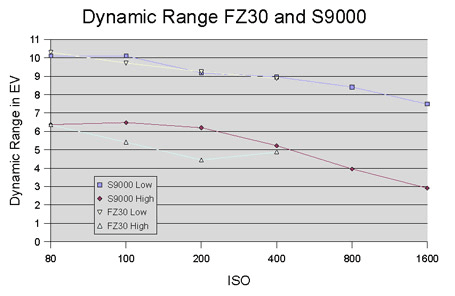
The FZ30 and the S900 are closely matched in Imatest's Low-Quality measurement, which shows the number of steps the cameras distinguish with 1 full EV of noise. This low-quality range indicates that highlight and shadow values will retain some texture, but not crisp, readable detail. It's common for good compact cameras to score at or slightly over 10 EV at their lowest ISO setting, and both the S9000 and the FZ30 do. The S9000 keeps it up for ISO 100, but drops nearly a full stop at 200, and levels out for 400. 800 and 1600 also show a steady decline. The FZ30 shows a significant drop from 80 to 100, another drop at 200, and not much deterioration at 400, so that the two cameras have very similar low-quality scores at 400.
The High Quality measurement shows the range of tones over which each camera will render images with no more than 1/10 of an EV of noise. That's the part of the image that people look at, so it's much more important. At ISO 80, the cameras are closely matched, but the S9000 has a significant edge at ISOs 100 and 200. The gap is small at ISO 400, but still in the S9000's favor.
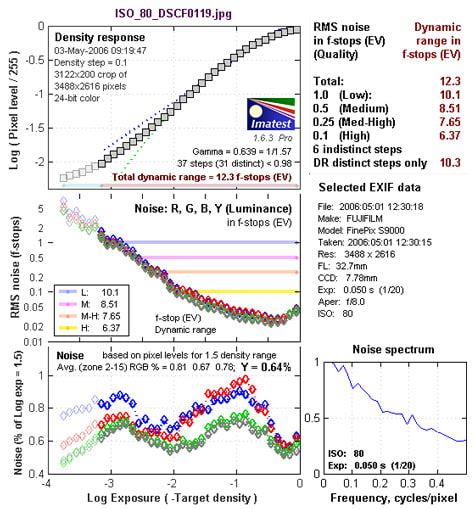
Fujifilm S9000 - ISO 80
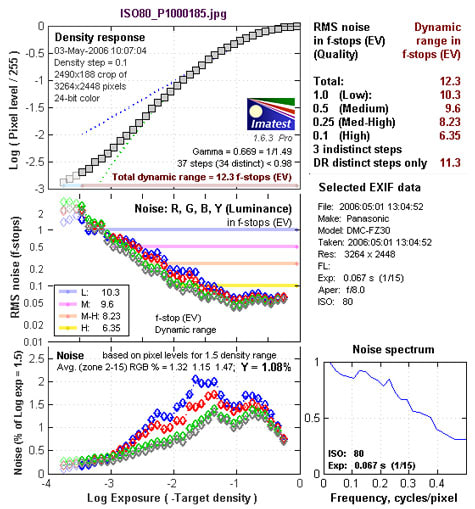
Panasonic FZ30 - ISO 80*
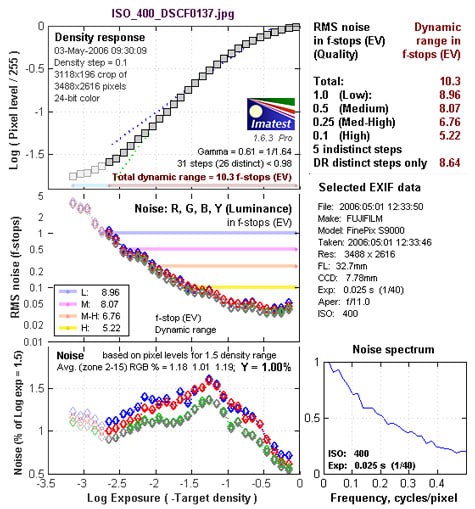
Fujifilm S9000 - ISO 400
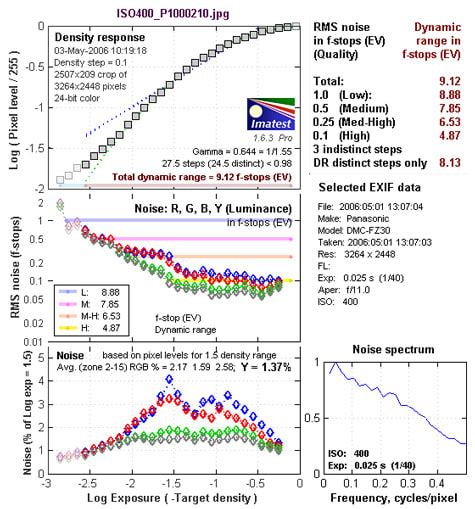
Panasonic FZ30 - ISO 400*
The S9000 has a significant edge in the dynamic range tests, with generally superior performance. It ought to be particularly useful that ISO 100 and 200 look good on the S9000 – keeping the ISO pegged at the minimum setting is a pain, but that's the best strategy with the FZ30.
Color*(Advantage: Panasonic FZ30) *
We test cameras for color accuracy by shooting images of a standard GretagMacbeth color chart under controlled lighting and analyzing the images with Imatest software. Because we wrote individual reviews of the S9000 and the FZ30 within the past year, and already reported on their performance at their lowest sensitivity settings, we chose to test them at ISO 400 for this comparison. Interestingly, their performance at 400 is similar to their performance at low ISOs. Below is a still life scene shot with each of the cameras at ISO 400. Click on the thumbnails to view the full resolution shots.
[

Fujifilm S9000 - ISO 400](https://www.reviewed.com/cameras/viewer.php?picture=S9000-StillLife-LG22.jpg)
[

Panasonic FZ30 - ISO 400](https://www.reviewed.com/cameras/viewer.php?picture=FZ30-StillLife-LG22.jpg)
We report the tests with a chart showing a color gamut with each of the tiles of a GretagMacbeth color chart plotted in their ideal locations and as the camera recorded them. The distance between the two points indicates the amount of error in the reproduction.
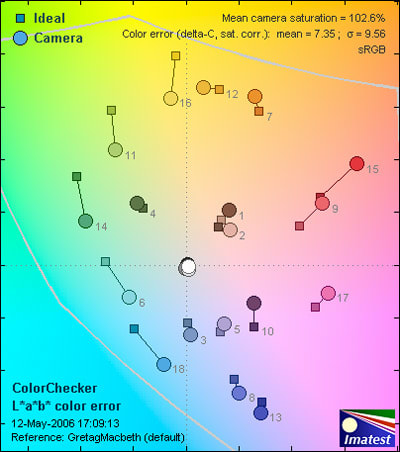
Fujifilm FinePix S9000 - ISO 400
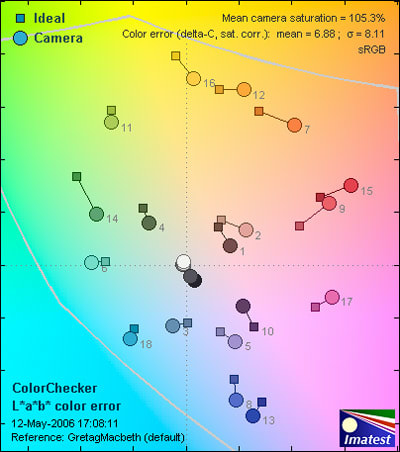
Panasonic Lumix FZ30 - ISO 400
Saturation measures how bright and pure the colors are. The ideal saturation figure is 100 percent – the colors are exactly as they were shot. Most cameras increase color saturation, though. It makes the colors pop, but it can be overdone, yielding cartoonish colors and making images difficult to edit digitally. Still, nearly all manufacturers boost color to be sure that their pictures don't look dull. The Panasonic FZ30 oversaturated our test shot moderately, with a respectable 105.3 percent score. The Fujifilm S9000 did a bit better, with a very good 102.6 percent score.
We also report mean color error – not how bright the colors are, but whether they're the right hue. In this test, the FZ30 came out ahead, with a 6.88 mean color error, while the Fujifilm turned in a 7.35 score. Both figures are pretty good for compact cameras, though we'd say that the difference – 0.47 points – is a significant gap. As a frame of reference, a color error under 5.5 is excellent, while an error value of 9.0 or above is terrible.
While the S9000 does not impose as much of a boost in color saturation, the FZ30’s advantage in color accuracy will make for a more realistic scene reproduction.
White Balance*(Advantage: Panasonic FZ30)*
The Panasonic Lumix FZ30 and the Fujifilm FinePix S9000 feature auto white balance, several white balance presets and custom white balance functions. Both can save two custom settings, and the FZ30 has a fine tune function, like those on many DSLRs, that allows the user to tweak the balance warmer or cooler.
The Fujifilm S9000 needs the tweaks more than the FZ30 does, however. Using the cameras' auto white balance setting, we shot the GretagMacbeth color checker chart under daylight, fluorescent and tungsten lighting, and found that the FZ30 performed better. In daylight, the FZ30 looks completely neutral, while the S9000 goes cyan. In tungsten, the S9000 goes very orange, as though it weren't compensating at all for the warm tint of the bulbs, while the FZ30 fairly subtly overcompensates, going slightly green. We weren't thrilled with either camera in fluorescent light, and we grant that it's the hardest test of the three. The S9000 looks kind of yellow-green, while the FZ30 goes a cooler green.
The Imatest charts we show below exaggerate the color errors for the sake of illustration.
Fujifilm S9000 - Auto white balance - Daylight test
Panasonic FZ30 - Auto white balance - Daylight test*
*

**Fujifilm S9000 - Auto white balance - Fluorescent light test*

Panasonic FZ30 - Auto white balance - Fluorescent light test

Fujifilm S9000 - Auto white balance - Tungsten light test
*

P**anasonic FZ30 - Auto white balance - Tungsten light test*
The FZ30 has the strong advantage here, with better presets, better manual performance, and its useful fine-tune control.
Portrait* (Advantage: Fujifilm S9000)
*Both the S9000 and the FZ30 are prosumer cameras, and users in that market take plenty of portraits. In a nod to the serious family photographer, for whom super-zooms are a popular option, we used the cameras to photograph 13-month-old Bruce.
As thoughtful as Bruce is, he's a mover, as evidenced by his mother's firm grip on the straps of his overalls. It was a bit of a challenge getting focused, steady shots of him, given the shutter delay on each of the cameras. The FZ30's image stabilization came in very handy – the shots from that camera are much sharper than the S9000 images.
Panasonic FZ30
Fujifilm S9000*
We shot these images with both cameras set to Program exposure, pattern metering and auto white balance. The color varied between backlit and side-lit images, but generally remained pleasing and natural. In paired shots, the FZ30's skin tones look slightly yellower and the S9000's look pinker. Though both cameras blew out the white of the boy's shirt when it was side-lit, they kept the shadow side of his face bright and open.
To set aside the image stabilization issue, we shot a few portraits with the cameras mounted on a tripod and the FZ30's stabilization turned off. Photographing our most mature staff member, we shot with the cameras set to aperture priority and a few ISOs, and on each camera's Portrait scene mode.
*

Panasonic FZ30 - ISO 200 - Aperture Priority*

Fujifilm S9000 - ISO 200 - Aperture Priority
**
Panasonic FZ30 - Portrait mode - ISO 200
Fujifilm S9000 - Portrait mode - ISO 200
In aperture priority mode, the cameras showed their essential characteristics – the FZ30 looks much sharper, even with stabilization turned off. Given the ravages of time on our model's face, we're not sure we like all that sharpness in a print, but we'd rather have it, and blur it away, than not have it and want it. The S9000 image has less noise, a distinction that's visible onscreen at 100 percent viewing size, but much less noticeable in an uncropped 8x10.
Panasonic FZ30 - Aperture Priority crop
***

Fujifilm S9000 - Aperture Priority crop
Young Bruce's skin is smooth and pale, but the older model's skin has more color and unevenness. Looking above the eyebrow, we note a tendency for the FZ30 image to go blotchy, while the S9000 maintains smoother transitions from tone to tone. This difference could be a function of the FZ30's superior sharpness and inferior noise handling. Regardless, it's an advantage for the S9000.
The S9000 has the advantage here, with better skin tones, smoother transitions, and, importantly, faster operation. The shutter delay on both cameras is unfortunate, but the FZ30’s is worse.
RAW Files* (Advantage: Fujifilm S9000)
*Both the Fujifilm FinePix S9000 and the Panasonic Lumix FZ30 can record RAW files, which is generally an advantage for photographers who try to get the very best out of their digital cameras. RAW files preserve much more of the original data collected by the image sensor, while JPEG files, as they compress an image, lose data that may be useful in editing it.
We opened RAW files from both cameras with the packaged software, and found it limited – we jumped to Adobe Photoshop Elements, which accepts Adobe's RAW converter. The Adobe software offers options to change white balance, exposure, shadow level, brightness, contrast and saturation, in addition to some more advanced controls. Since we expect many RAW aficionados to rely on Adobe products, it's disappointing that neither camera's software offers as broad or well-implemented controls for RAW conversion.
For our shot of flowers on white paper, the software's default settings decreased exposure by a full EV on shots from both the S9000 and the FZ30. It also increased brightness and contrast. We let it, saved those images and then re-converted the RAW files "straight," without the changes. We had assumed that the white background triggered the changes, guessing that the software was set to prevent overexposure of light subjects. That wasn't the issue in our shot – the paper wasn't blown out in either conversion. Interestingly, the red channel was the problem. In many of the flowers, it blew out in our straight conversion, but held detail in the default files. Still, the default images look gloomy to us. It may be that the way to get the best image out of the RAW files would be to do the default conversion and then selectively brighten the background without bothering the flowers too much.

Panasonic FZ30 - RAW default

*Fujifilm S9000 - RAW default
*

Panasonic FZ30 - RAW flat

Fujifilm S9000 - RAW flat
We found that RAW files from the S9000 and the FZ30 are far more editable than their JPEGs, and that their JPEGs are inferior even without editing. The transitions from light to dark or from subdued to saturated colors are sometime ragged in JPEGs, but they're much smoother in RAW files.
Which RAW implementation is better? At first blush, we see more tonal information in the S9000 file. The Red, Green, and Blue channels all have detail, even in very saturated colors, which allows more scope for image editing. Fujifilm's Super CCD HR technology should deliver better tones than the FZ30's chip. RAW file conversion and editing aren't simple. We're sure that both the FZ30's and the S9000's RAW files have plenty to yield to dedicated users, but the S9000 files start out looking better.
Video Capture
Video Performance
Since one of the inherent advantages of a super-zoom camera over a digital SLR is the opportunity for video capture, we decided to utilize some of the knowledge possessed by our sister site, www.camcorderinfo.com and put the FZ30 and S9000 through some rigorous video tests.
*Control Options (Advantage: Panasonic FZ30)
*In terms of manual control in video mode, the Panasonic FZ30 is by far the more generous of the two models. The opportunity to manually control focus, white balance, metering modes, AF modes, image size and quality, continuous or single AF and color effects are an impressive canon of features when compared to the S9000. The Fujifilm S9000, by contrast, only offers manual control over image size. While an overwhelming disparity of this level in control is often indicative of a distinctly superior video recorder, our batch of video performance tests revealed a different story.
*Motion / Compression (Advantage: Fujifilm S9000) *
Motion capture is essential to video quality and the results found with these two camcorders will certainly solidify the strong advantage of the S9000 when shooting with automatic settings. The Panasonic Lumix DMC-FZ30 is capable of shooting video in frame rates of 30 fps and 10 fps with two quality settings for resolution. The resulting footage from the highest quality 30 fps VGA video displayed a competent handling of motion that was unfortunately diminished by the struggling auto focus and occasional underexposure. While these problems will be enough to dissuade many hybrid enthusiasts, an additional motion problem occurred that truly hammered the final nail in the coffin of the Lumix DMC-FZ30. When viewing footage in playback mode, it became apparent that the FZ30 was unable to handle the speed of the approaching trains and the resulting footage displayed artifacts that strongly detracted from the recorded footage. The S9000 reproduced motion accurately in its highest 640 x 480 resolution (at 30 fps), and the in-focus and legible results were much cleaner than those of Panasonic.
When the footage captured by this camera was entered into Adobe Premiere for PC post-production editing the video content was overlaid with text on both the top and bottom of the screen. This text was only apparent in the final images displayed with the Fujifilm camera and are a result of an un-registered trial version of a JPEG MOTION CODEC made by the jpg.com corporation. This overlay can be avoided by either erasing the PicVideo CODEC from your PC or paying a $28 registration fee.
*Autofocus (Advantage: Fujifilm S9000) *
When shooting video footage with both cameras in a low light situation with motion, the Fujifilm FinePix S9000 was able to lock focus automatically with far more accuracy and only slightly apparent "breathing" when compared to the Panasonic Lumix DMC-FZ30. The FZ30’s struggle to find focus oscillated between minimal and oppressively heavy, lasting upwards of five or six seconds. The FZ30 searched for focus when shooting static scenes, in addition to moving subjects.
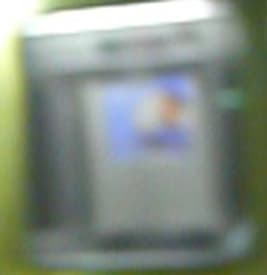
Panasonic Lumix DMC-FZ30
Fujifilm FinePix S9000
The FZ30’s auto focusing deficiency in video mode resulted in inferior, often out-of-focus video footage, which unfortunately negates the advantages offered by the more versatile control array. The opportunity to adjust focus manually enables users to avoid this problem, although it will only be possible if users are capable of manipulating and maintaining focus throughout video capture, with accuracy and control. Unfortunately, the manual focus feature included on the FZ30 is also quite noisy and audible during video recording; the noise from spinning the external focal ring was recorded by the in-camera microphone located directly to the rear on the top of the camera. This handling noise muffled the audio track and compromised it beyond recognition during adjustment.
*Metering (Advantage: Panasonic FZ30) *
Metering in movie mode provided the Fujifilm FinePix S9000 with better results when shooting in the default center-weighted averaging mode when compared to the results of the FZ30. This setting, however, is unfortunately the only metering option available on the Fujifilm camera. The Panasonic Lumix DMC-FZ30 on the other hand does allow for users to select between the three standard metering options of center-weighted averaging, spot, and evaluative modes found when capturing still images. When used properly, the metering modes on the FZ30 produced accurate and consistent results when manually controlled.

Fujifilm FinePix S9000 Panasonic FZ30
*Color (Advantage: Fujifilm S9000)
*The Fujifilm FinePix S9000 and the Panasonic Lumix DMC-FZ30 were tested in full auto mode for color accuracy with both video and still color charts and the results for these cameras in both strongly lit and low light situations were quite revealing. When shooting at a light level of 3000 lux, both cameras displayed footage that strayed heavily in terms of both tonal accuracy and saturation. The FZ30 produced far worse results than the S9000, however, with the camera heavily over and under-saturating the color spectrum. Cooler colors produced by the FZ30, in the blue and magenta areas of the color chart displayed under-saturation while the green, red and yellow areas displayed over-saturation. More worrisome than the over-saturation however was the errant tonal hues which shifted colors like dark blue nearly into the red section of the color spectrum. The S9000 also had problems with saturation when shooting at 3000 lux although more reserved in its extremity when compared to the FZ30. Under-saturated colors were more common with this camera, although again, the real issue revolved around the tonal shifts. These tonal shifts are most noticeable in the red and green sections of the color spectrum although a general inconsistency appears throughout the chart. When it comes to general color accuracy in strongly lit situations neither camera turns in spot-on results, however, the S9000 comes much closer to the ideal.
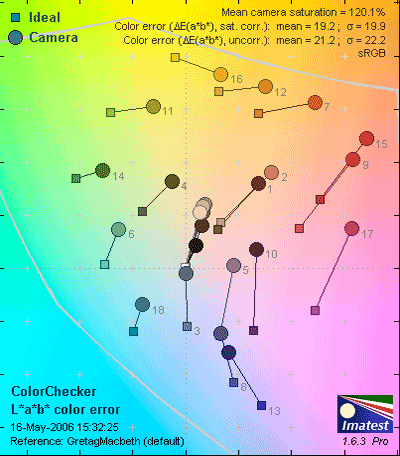
*Fujifilm FinePix S9000
Fujifilm FinePix S9000
*
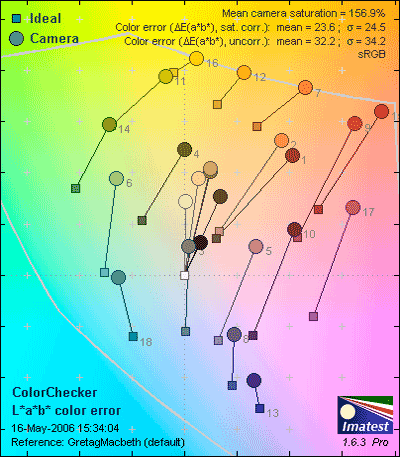
*Panasonic Lumix DMC-FZ30
Panasonic Lumix DMC-FZ30*
*Low Light Performance (Advantage: Panasonic FZ30) *
When shooting in low light situations, both in lab tests and with outside scenes, the cameras were able to produce far more accurate saturation levels than when brightly lit. In terms of tonal accuracy in the dimly-lit conditions, the Panasonic Lumix DMC-FZ30 gained an advantage over the S9000 from the 3000 lux test. The FZ30 produced images that were more saturated and tonally accurate in comparison to the results of the S9000. The S9000 does have a problem with noise in low light and this is definitely apparent in both the studio and field samples provided. While the noise levels may be problematic, focus and the handling of motion with the S9000 is distinctly better than the blurred and unintelligible findings of the FZ30. Users will find that while noisy, the S9000’s low light video footage will be much more crisp than comparable footage from the FZ30, though the footage may be slightly darker.
Panasonic Lumix DMC FZ30
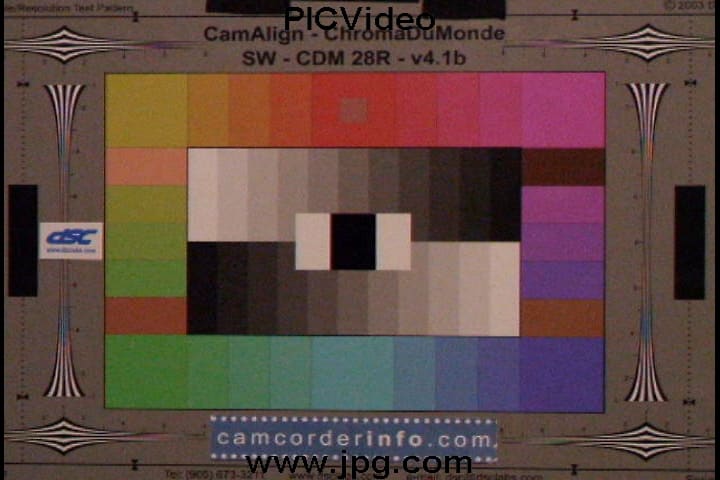
Fujifilm FinePix S9000
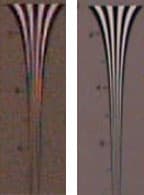
Fujifilm FInePix S9000 (left), Panasonic Lumix DMC-FZ30 (right)

Fujifilm FinePix S9000 (top), Panasonic Lumix DMC-FZ30 (bottom)
*Audio (Advantage: Fujifilm S9000) *
The audio was lackluster with both models, as might have been expected; each inadvertently recorded handling noise, mechanical noise, and generally suffered from the regular laundry list of problems encountered with a petite, monaural in-camera microphone. Users shouldn’t expect the frequency or dynamic range found with external or in-camera stereo microphones. Monaural recordings reveal inconsistencies, errors and glitches that would normally be balanced and masked by the presence of a second track in the case of stereo recording. When a second microphone is present, the two audio tracks work together to provide cleaner audio in playback. Since both models relied on a single audio track, neither performance was stellar. In general, the Fujifilm FinePix S9000 produced audio that was cleaner and more sensitive to subtleties in terms of both frequency and dynamic levels.
The S9000's video mode has fewer options, but we found that the quality of the video is better than the FZ30's. Our general view of still-camera video modes leans in favor of the "simple-but-usable" variety, and the S9000 is way ahead in our book, although still way behind a true camcorder.
Components
Viewfinder* (Advantage: Panasonic FZ30)
*Both the S9000 and the FZ30 feature electronic viewfinders with 0.44-inch, 235,000-pixel displays. The high resolution is impressive, but not quite good enough for reliable manual focusing. Both cameras offer magnified views for focusing, which are helpful when the cameras are on tripods, photographing still objects. We found the viewfinder lag annoying and confusing on both cameras. When the cameras shift between horizontal and vertical orientations, the image in the viewfinders tilts oddly, as it fails to keep up with the motion of the camera.
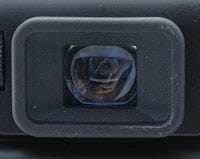
*Fujifilm S9000
***

Panasonic FZ30*
Following fast-moving action causes the same problem, making it difficult to shoot sports – we tried a sixth-grade soccer game, and were pretty much defeated by the viewfinder lag and the shutter lag. Compared with even an incredibly slow DSLR – we shot the two cameras side-by-side with a Fujifilm FinePix S2 – the FZ30 and S9000 are frustratingly slow.
In the end, we found the FZ30's display stuttered a little less and looked a little more saturated. By a slight margin, we prefer it.
LCD screen* (Advantage: Panasonic FZ30)
*Panasonic put an LCD on the FZ30 that matches the viewfinder's resolution. The 2-inch, 235,000 pixel display tilts out and swivels, which is useful for overhead or worm's-eye-view shots. Unfortunately, it has a narrow field of view, fading and solarizing when seen from an angle.
Fujifilm did not match the S9000's LCD to its viewfinder. Its 1.8-inch, 118,000-pixel LCD is not as good as the viewfinder for checking focus. The LCD swings out on a pair of hinges, first from the top, then from the bottom, to allow either high- or low-vantage point viewing.
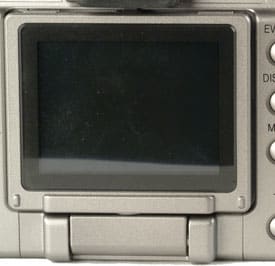
Panasonic FZ30 LCD screen
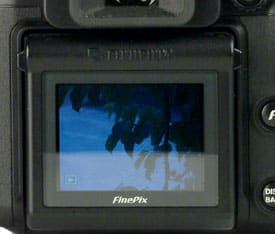
Fujifilm S9000 - LCD screen
The FZ30's LCD is far better, with super image quality, and a more flexible mount.
Flash* (Advantage: Panasonic FZ30)
*We wanted to know just how much light the FZ30 and the S9000 flashes put out, so we set the cameras up in our testing suite, put their lens caps on, and shot with their flashes on. Leaving the lens caps on ensures that the cameras will deliver their maximum flash power. With our Konica-Minolta Autometer VF set to ISO 200, we measured optimal exposures of f/4.0 plus half a stop, give or take 1/10 of a stop, at 9 feet. Because our testing area has black walls and floors, we can assume that the flashes would perform better in normal, more reflective rooms.
We also shot a plain, white surface with both flashes, to see how evenly they lit their subjects. With the cameras set to wide angle, there is significant darkening in the corners of the frame, and the effect is more extreme in the S9000 images. The S9000's lens is much wider-angle than the FZ30's, so it would need a wider flash as well. It looks as though Fujifilm sacrificed corner coverage for other benefits – most notably, longer range. A narrower-angle flash concentrates its light and reaches further.
While the two cameras offer a similar illumination range, the FZ30’s in-camera flash is superior, providing more even coverage.
Battery* (Advantage: Panasonic FZ30)
*The S9000 follows other Fujifilm products, relying on rechargeable AA cells for power. Fujifilm supplies a set of 4 NiMH AA cells and a charger. Many users like the economy of using standard AA cells, but we find that the Lithium ion pack that Panasonic uses in the FZ30 lasts longer between charges, and is quicker to change in hectic shooting situations.
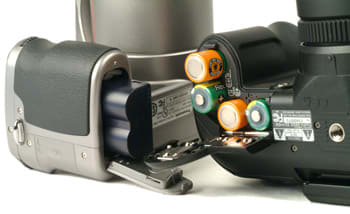
We also noted that the S9000 functioned erratically as its batteries wore out. We'd much prefer that it had some sort of safety circuit that shut the camera down with a warning or alert, instead of having the LCD suddenly wink out while an image was being recorded to the memory card. In the end, the FZ30's battery lasts longer and is more convenient to change.
**Lens ***(Advantage: Panasonic FZ30)
*The FZ30's Leica-branded 7.4 – 88.8mm, f/2.8 – 3.7 zoom is sharp throughout its range. The S9000's 6.2 – 66.7mm, f/ 2.8 – 4.9 Fujinon is also sharp, but doesn't seem as contrasty, and is slower at the telephoto end of its range. The Leica's range is 35 to 420mm (35mm equivalent), while the Fujinon runs 28 to 300mm on the same scale. The added range on the wide-angle end of the Fujinon will be more useful for some users, while others will go for the Leica’s telephoto capabilities.
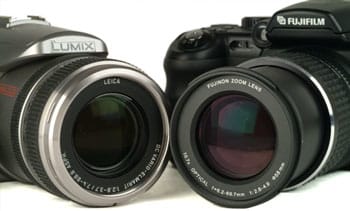
Most significantly, the FZ30's optic is equipped with Panasonic's excellent Optical Image Stabilization, which significantly improves sharpness in low light, and pretty much whenever the lens is set past 200mm (35mm equivalent). We recommend leaving it on unless the camera is mounted to a solid tripod.
Fujifilm promotes its usually very good high-ISO performance as a substitute for optical image stabilization – high ISO should allow higher shutter speeds, and better action-stopping performance. Oddly, though, the S9000's full auto settings don't put that theory into practice. We found the camera in full automatic, shooting at ISO 200 indoors and with the lens set to 200mm equivalent, to be a recipe for motion blur. Why didn't the S9000 bump up to ISO 800 or 1600? It doesn't make sense to us.
The Leica lens is an advantage for the FZ30. Some users would prefer the S9000's wide-angle capability, but not all. Leaving aside the fact that the S9000 has a longer range at one end and the FZ30 has more at the other, the FZ30's lens has a wider aperture at telephoto, and it has excellent optical image stabilization.
Macro* (Advantage: Panasonic FZ30)
*Both cameras promise macro capability, so we set up a still-life to test them. With both cameras, the zoom setting affects the minimum focusing distance. They focus more closely at wide angle settings than telephoto. Though we don't have a standard test for sharpness in the macro range, our close shots show very good detail, and look sharp.
Both lenses offer macro settings that allow the user to shoot a penny close enough to cover half the height of the frame. Like many zoom-macro combination lenses, these achieve their closest focus, and highest magnification, at their widest zoom settings. That's unfortunate, because it brings the lens very close to the subject, introducing distortion, and making lighting problematic. Our shots of the penny are unevenly lit because of the lens shadows – the S9000's lens was less than an inch from the subject, and the FZ30's was less than 2 inches from it. These may not be the cameras for nature studies of stinging insects – not with working distances like that.
Fujifilm S9000 - Marco
Panasonic FZ30 - Macro*
For less extreme close-ups, its possible to zoom in a bit with either camera, but the minimum focusing distance changes steadily while the zoom ring turns, meaning that precisely framing a subject takes some trial and error – zoom to compose the shot, try to focus, find that the zoom setting and the focal distance aren't compatible, zoom out, re-position, re-focus, find the shot isn't framed well, reposition, re-zoom, refocus, etc.
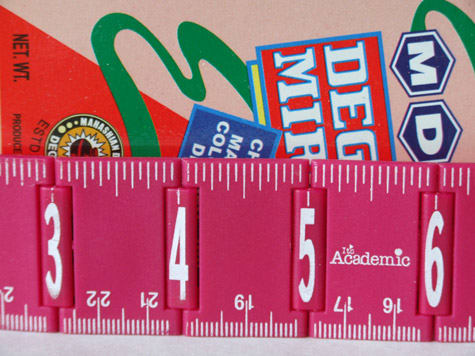
*Fujifilm S9000 - Macro *
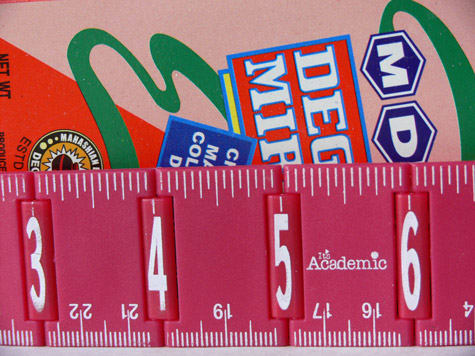
*Panasonic FZ30 - Macro *
The FZ30's better focusing distance – 2 inches is much easier to handle than 1 inch – and longer lens swings the advantage in Panasonic's direction.
Model Design / Physical Tour
Model Design / Appearance* (Advantage: Panasonic FZ30)
*Both the FZ30 and the S9000 count as "SLR-like" cameras, with wide, flat backs, viewfinder humps, long lens assemblies and thick grips for the user's right hand. There's a small world of variation, given those basics, however. The FZ30 looks fancier, with a thicker lens housing. The FZ30's lens zooms and focuses internally, so it feels more solid than the S9000's smaller lens, which telescopes out as it's zoomed and focused. The FZ30 is definitely the more attractive, solidly-constructed camera.
Handling* (Advantage: Panasonic FZ30)
*It's great that the S9000 and the FZ30 have conventional zoom and focus rings on the lens barrels. They're much better than the rocker switches on many compact cameras. The zoom rings are really mechanical, so they don't have the speed or backlash problems that rocker switches have. The focus rings are less useful, because the manual focus provisions on the cameras depend on electronic displays, which impose a time lag and don't snap into focus the way optical systems do.
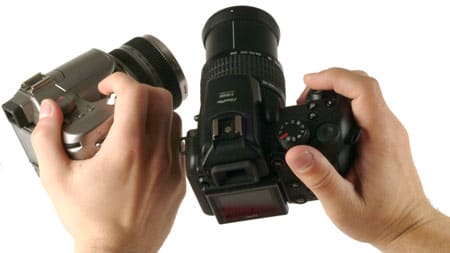
The FZ30 has an advantage with two control dials, which speeds up manual settings. It's an SLR-like configuration. In general, the cameras handle best when they are most like SLRs. The S9000's exposure compensation control works just like many entry-level DSLRs’ – the camera has a button near the shutter release to hold down while turning the control dial. The FZ30 is slower, relying on the 4-way controller, which inclines the user to take their hand off the grip and their finger away from the shutter release. On the other hand, the FZ30's compensation scale is marked in 1/3 EV increments, while the S9000's is completely unmarked – it's simply a straight line.
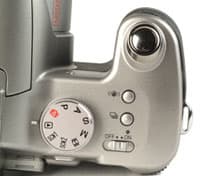
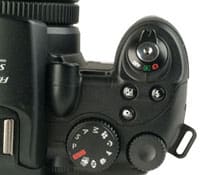
Both cameras are slow. They have significantly worse shutter lag than we see in DSLRs and even in some other compact cameras. Perhaps worse, the viewfinder displays have slight delays, making it a little disorienting to pivot the cameras from horizontal to vertical. One has to pause for the cameras to catch up when panning. We also noticed a lag in the exposure controls on the FZ30 – it took a moment for an exposure compensation adjustment to register. The first few times it happened, we wondered if we hadn't hit the button firmly, and gave it another tap only to find that we had overshot our mark.
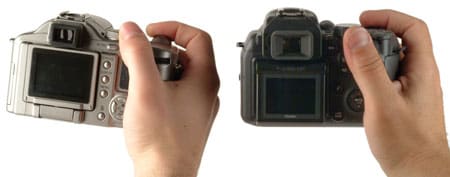
The FZ30's larger controls, including the pair of control dials, give it an advantage in handling. The large control rings on the lens feel more solid than the S9000's. In part, that's because of the internal focus design of the FZ30's lens – with a fixed length, it can be built more solidly.
Front* (Advantage: Panasonic FZ30)
*Both the FZ30 and the S9000 seem to be all lens when viewed from the front. The FZ30 features a front control dial in the hand grip for exposure control. The S9000 has a PC terminal for synchronizing manual flashes. The S9000's viewfinder/flash hump sits higher over the lens than the FZ30's, and the S9000's focus assist light is a large, bulbous assembly, giving the camera a more cluttered look than the FZ30.
Both cameras' lenses have conventional zoom rings, which makes it easy to set the focal length quickly and accurately. The arrangement is much better than the motorized zooms on many compact cameras.
The FZ30's focus and zoom rings are more solid and more comfortable – they are the most significant of several build-quality advantages that the Panasonic has over the Fujifilm S9000.
Back* (Advantage: Fujifilm S9000)
*The FZ30's larger LCD (2 inches vs. the S9000's 1.8 inches) dominates the camera's back, while the S9000's LCD looks undersized. The S9000's viewfinder eyepiece has a large eyecup, making it look bigger than the FZ30's though they are the same size. The FZ30's eyepiece is elongated to accommodate the camera's 16:9 shooting mode, a feature the S9000 lacks.
The S9000 buttons follow the Fujifilm standards, with an "F" button bringing up a menu for image size, ISO and color mode, as well as a "Back" button for menu navigation. The S9000 has a dedicated, external switch for setting the metering pattern: a ring surrounding the AE lock button. The FZ30 allows access to those features, but only through its menus.

The FZ30's 4-way controller lacks a central "OK" button, but each of its 4 quadrants brings up a separate, secondary function when the controller isn't handling navigation. The controls are exposure compensation, flash, image review, and the self timer. The S9000's 4-way controller buttons can magnify the display image, but it does not offer other functions beyond navigation.
We find the S9000's controls more comfortable and more logical. Though the FZ30's LCD is better, that's rated in the LCD section, not here.
Sides* (Advantage: Fujifilm S9000)
*The S9000 and the FZ30 have media card doors on their right sides and interface ports on their left sides. The FZ30's media card door is just large enough to accommodate SD cards, which are relatively small. Unfortunately, it's also flimsy and lacks a dust and moisture seal. Annoyingly, the strap lug is so close to the door that the strap often blocks the door when switching cards. We found the closure mechanism inconvenient and less sure than a latch would be. The user must press the door and slide it back; a move that is harder than it should be because the shallow texture on the door doesn't offer much traction for a thumb.
The S9000's media card door is large, because the camera accepts both CF and xD media cards. Unfortunately, it's not much heavier than the FZ30's door and has an inferior closure – it simply snaps shut. It also lacks environmental seals.
The S9000 has a flexible rubber cap covering its ports, which is more durable and a better environmental seal than the small door on the FZ30, which is the flimsiest, most vulnerable component on either camera.
Designed for prosumer-level users, both cameras should have better, more durable doors, but the S9000 has the advantage. The port door actually seals, and it won't break.
Top* (Advantage: Fujifilm S9000)
*Both the FZ30 and the S9000 have speaker grills to the right of their viewfinder humps. They feature standard, non-dedicated hot shoes on top of their humps and large mode dials to the right. The S9000's rear control dial sits on top of the camera, overhanging the back in a convenient spot for the user's right thumb, while the FZ30's dial sticks out of the camera’s back.
Buttons on top of the FZ30, near the shutter release, set burst mode and image stabilization mode. Though the Optical Image Stabilization system is a great feature, it doesn't make sense to control it from the top of the camera, because users don't need to change the setting much. Shutting it off when the camera is mounted on a tripod is really the only time we'd fuss with it.
The S9000's top buttons are more sensible. Burst mode, exposure compensation, and flash mode are controls that users change while shooting, and it makes sense to allow the user to access them without moving much from the shooting position. The S9000 gets the nod in this category because of its superior usability.
Bottom* (Advantage: Panasonic FZ30)
*The FZ30's battery compartment door is controlled with a large pivoting latch. It's the only door on either camera that seems designed to last as long as the optics. The S9000's battery door must be pressed and slid to open, and we expect that the friction fit that makes it tight will gradually loosen up, making the door less secure.
Both cameras feature metal tripod sockets centered under the lenses. They are surrounded by the same hard plastic that makes up the cameras' shells. Users should take care not to scratch the plastic as they mount the cameras on tripods. Fujifilm and Panasonic could have avoided the problem by putting a patch of rubber around the sockets, and we hope they do so on updated cameras.
The FZ30's latching battery door gives it the advantage here.
Spec Comparison
Spec Comparison
Overall Impressions / Conclusion
**Conclusion
**The Panasonic Lumix FZ30 has some significant advantages over the Fujifilm FinePix S9000 – optical image stabilization, a feature which will save many, many pictures when a tripod isn't appropriate; better color performance; and a more solid feel. We particularly like the fact that the FZ30's lens focuses and zooms internally. It seems more sturdy and less vulnerable to dust and moisture than the telescoping lens on the Fujifilm Finepix S9000. The less-sturdy plastic skin of the S9000 makes it hard to accept its price, which is $70 higher than the FZ30.
Still, the S9000 delivers in a few important areas, notably avoiding some of the FZ30's annoyances. Most straightforwardly, its 28mm-equivalent wide-angle capability makes it possible to get some shots that are impossible with the FZ30's 35mm-equivalent zoom. The S9000 delivers much better noise performance, significantly beating FZ30's results, and better overall dynamic range. Though the S9000's image quality takes a dive at ISO 800 and 1600, the settings exist, and there are plenty of shooting situations where they are useful and perhaps necessary.
How do these cameras compare to cheap DSLRs? Using either side-by-side with any DSLR will prove the point that they are certainly not "do-it-all" cameras. The FZ30 and S9000's electronic viewfinders have annoying lag, a real problem in shooting movement. Both cameras have much worse shutter lag than we've seen on any DSLR. Both cameras also have worse noise performance than most DSLRs.
Their great advantage is that they have very long zoom ranges – the FZ30 goes from 35mm to 420mm (35 equivalent) and the S9000 runs from 28mm to 300mm (35mm equivalent). It would cost several hundreds of dollars to get that zoom range for a DSLR, and well over $1000 to get it at comparable maximum apertures to the FZ30 and S9000. To compete with the FZ30's image stabilization, the cost would jump yet again. And, of course, hauling around an assortment of lenses for a DSLR is a lot less convenient than carrying the reasonably lightweight FZ30 or S9000.
In the end, both the FZ30 and the S9000 are very convenient cameras – easy to carry, with complete manual controls and long zoom ranges. For users who are content with their speed and image quality, they'll handle many, many shooting situations quite effectively. The choice between the two again comes down to priority: if you need the additional wide angle capability and prefer to shoot available light, the choice would have to be the S9000. However, if you’re drawn to the all-in-one element of the cameras and don’t want to haul around a tripod, the FZ30’s effective image stabilization, superior optical and color performance, and additional durability are all far beyond the S9000. Particular needs aside, for $70 less, the Panasonic FZ30 is clearly the stronger value.
Meet the tester

Patrick Singleton
Editor
Patrick Singleton is a valued contributor to the Reviewed.com family of sites.
Checking our work.
Our team is here to help you buy the best stuff and love what you own. Our writers, editors, and experts obsess over the products we cover to make sure you're confident and satisfied. Have a different opinion about something we recommend? Email us and we'll compare notes.
Shoot us an email